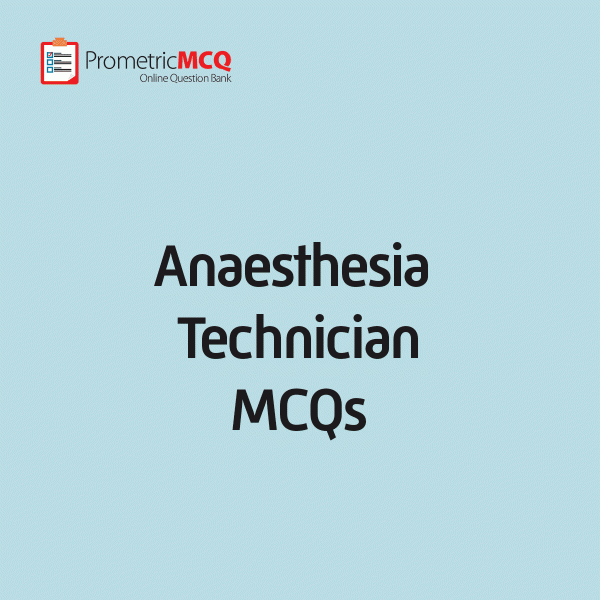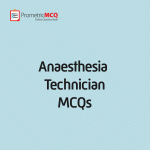Anesthesia Technician MCQs
Original price was: $ 89.$ 59Current price is: $ 59.
Anesthesia Technician MCQs – Prometric Exam Questions (MCQs) to prepare for DHA Exam Dubai – DHCC Exam Dubai – Haad Exam Abu Dhabi – MOH Exam UAE – SCFHS Exam – SMLE Exam Saudi Arabia – OMSB Oman – QCHP Qatar Exam – NHRA Exam Bahrain
- Description
Description
Anesthesia Technician MCQs Prometric Exam Questions (MCQs) to prepare for
- DHA Exam – Dubai (Dubai Health Authority)
- DHCC Exam – Dubai (Dubai Healthcare City Authority)
- Haad Exam – Abu Dhabi (Health Authority–Abu Dhabi)
- MOH Exam – UAE (Ministry of Health)
- SCFHS Exam – Saudi Arabia (Saudi Commission for Health Specialties)
- SMLE Exam – Saudi Arabia (Saudi Medical Licensing Exam)
- OMSB Exam – Oman (Oman Medical Specialty Board)
- QCHP Exam – Qatar (Qatar Council for Healthcare Practitioners)
- NHRA Exam – Bahrain (National Health Regulatory Authority)
Anesthesia Technician MCQs are loaded in Self Assessment Application Online.
Total MCQs: 443
Subscription Valid for 6 Month
How to Subscribe?:
- Click on the” Subscribe Now or Add to Cart ” button;
- Fill out the billing details and click on “Place Order;
- You will get access details by email within 2 to 3 hours after the payment.
Preparing for the various health authority exams in the Middle East, like DHA, DHCC, HAAD, MOH, SCFHS, SMLE, OMSB, QCHP, and NHRA, requires a thorough understanding of anesthesia technology. I’ll provide you with some sample multiple-choice questions (MCQs) that are relevant to the role of an Anesthesia Technician. These questions can help you prepare for these exams:
- Basic Anesthesia Equipment:
- Which of the following is a primary function of the anesthesia machine?
A. To provide oxygen therapy
B. To monitor patient vital signs
C. To administer inhaled anesthetics
D. To regulate IV fluid administration
- Which of the following is a primary function of the anesthesia machine?
- Pharmacology:
- Propofol is commonly used in anesthesia for its properties as a:
A. Analgesic
B. Sedative
C. Muscle relaxant
D. Antipyretic
- Propofol is commonly used in anesthesia for its properties as a:
- Patient Monitoring and Safety:
- During anesthesia, the standard monitoring of a patient must include:
A. ECG, blood pressure, and body temperature
B. ECG, blood pressure, and respiratory rate
C. ECG, blood pressure, and oxygen saturation
D. ECG, respiratory rate, and oxygen saturation
- During anesthesia, the standard monitoring of a patient must include:
- Anesthesia Procedures:
- In general anesthesia, which of the following is usually administered first?
A. Muscle relaxant
B. Inhalation anesthetic
C. Intravenous induction agent
D. Local anesthetic
- In general anesthesia, which of the following is usually administered first?
- Emergency Procedures:
- The immediate treatment for malignant hyperthermia involves:
A. Administering a beta-blocker
B. Increasing the rate of IV fluids
C. Administering dantrolene sodium
D. Providing supplemental oxygen
- The immediate treatment for malignant hyperthermia involves:
- Sterilization and Infection Control:
- Which method is most commonly used for sterilizing anesthesia equipment?
A. Dry heat
B. Autoclaving
C. Chemical disinfectants
D. Ultraviolet light
- Which method is most commonly used for sterilizing anesthesia equipment?
- Airway Management:
- The purpose of using a laryngeal mask airway (LMA) is to:
A. Facilitate tracheal intubation
B. Provide an alternative to mask ventilation
C. Measure expired carbon dioxide
D. Deliver high concentrations of oxygen
- The purpose of using a laryngeal mask airway (LMA) is to:
- Anesthetic Agents and Their Effects:
- Nitrous oxide, used in anesthesia, is primarily known for its:
A. Analgesic properties
B. Sedative effects
C. Muscle relaxant properties
D. Ability to induce unconsciousness
- Nitrous oxide, used in anesthesia, is primarily known for its:
- Legal and Ethical Considerations:
- Informed consent for anesthesia is important because it:
A. Allows the anesthesiologist to choose any method
B. Ensures patient understanding of risks and benefits
C. Is legally required for billing purposes
D. Decreases the hospital’s liability in case of adverse events
- Informed consent for anesthesia is important because it:
- Physiology and Anatomy:
- Understanding the anatomy of the airway is crucial for an anesthesia technician because:
A. It is necessary for effective pain management
B. It ensures proper placement of airway devices
C. It is required for surgical procedures
D. It aids in the diagnosis of respiratory diseases
- Understanding the anatomy of the airway is crucial for an anesthesia technician because:
These questions cover various fundamental aspects of anesthesia technology and are in line with the standards expected in professional exams for Anesthesia Technicians in the Middle East. It’s important to study comprehensively and understand the underlying principles behind each question for effective preparation.


